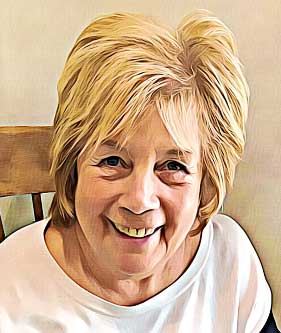There are hundreds of approaches to counselling and psychotherapy. To help you make sense of each one, we’ve organised the main counselling methods according to their theoretical framework. Each page features a breakdown of each technique with details of its origins, application and use in a therapeutic context.
Although some of the approaches included on these pages are not considered traditional forms of psychotherapy, all are intended to bring about positive change. It should also be noted that some types of therapy, due to their recent conception, may not have structures of accreditation in place.
Here’s a run-down of the most established forms of counselling and psychotherapy.
Psychoanalytical Therapy
Psychoanalytical therapy emphasizes personality development and structure. It originates from the work of Sigmund Freud who developed famous theories about personality structure which helped form the foundation of this approach.
He identified three elements of an individual’s personality: the ID, Ego and Superego. The id is the aspect of our personality driven by basic needs such as hunger and thirst. The ego works to strike a balance between the ID and super ego and is driven by realism. The superego is driven by morality and compels the person to act in a manner which is socially acceptable.
In addition to these elements, strong emphasis is also placed on childhood experiences as well as unconscious drives and urges. Our defense mechanisms and reactions to situations are also explored in-depth.
Although the psychoanalytical theory has undergone significant refinements over the years, the main principles remain the same; that human behavior is determined by external causes and motivated by irrational forces, the unconscious and instinct.
Cognitive Therapy
Cognitive Therapy were developed by psychiatrist, Aaron T. Beck in the 1960s. Its theories hold that our feelings, thoughts and behavior are all inter-connected. Individuals are able to overcome their problems by identifying negative thought patterns or behavior as well as their own emotional responses.
The original cognitive model was developed by Beck to explain the psychological processes which occur during depression. He separated them into three levels: automatic thought, intermediate belief and core belief.
In order to address and overcome problems, cognitive therapists require their clients to work collaboratively with them. Once the practitioner gets a strong sense of the client’s internal reality, efforts are then made to adjust existing negative assumptions, thoughts and personal goals.
This involves the fostering of skills which can be used to test and modify distorted perceptions. The intention is to encourage different emotional and/or behavioural reactions from the client.
Humanistic Therapy
Humanistic psychology originates from the theories of Carl Rogers, Otto Rank and later Abraham Maslow. To remedy their perceived shortcomings of psychoanalytic theory, they focused on creating a developmental process which led to healthier, more creative personality functioning.
To this end, Maslow developed his Hierarchy of Needs theory which describes the stages of personal growth in human beings: physiological, safety, love/belonging, esteem, self-actualization, self-transcendence. Maslow’s goal was to help the individual reach the sixth stage of self-transcendence which he considered to be a higher level of human consciousness.
The Humanistic approach is considered a positive type of psychology that runs counter to the pessimism often found in psychoanalysis. Humanistic counsellors focus on the process of self-actualization, in which they try to help the client develop a stronger sense of self and realise their potential for self fulfilment.
To achieve self-actualization, the therapist attempts to provide the client with key insights about their inner conflicts. Sessions are usually non-directive with empathy and non-judgment considered major aspects of the client-counsellor relationship.
Expressive Therapy
Expressive therapy has its roots with Shaun McNiff and his seminal work, The Arts and Psychotherapy (1981). In it he suggested that expressive therapies introduced action to psychotherapy and that action in therapy was rarely limited to a single mode of expression.
Although he acknowledged that verbal communication remained the traditional therapeutic method, McNiff also recognised that individuals have different expressive styles.
So when therapists are able to incorporate the different expressive capacities in their work with clients, they have a better chance to improve the person’s ability to communicate more effectively.
Expressive therapies involve the use of art, dance movement, drama, music and painting within the context of psychotherapy, counselling and healthcare. Their approach is based on the assumption that individuals can heal through creative expression and by using their imagination.
In turn, they are able to examine their own feelings, thought processes and emotions more easily. While some practitioners specialise in one particular discipline, others incorporate multiple forms of artistic expression into their sessions.
Integrative Therapy
After Freud’s development of psychoanalysis, numerous variations began to emerge. These included approaches such as psychodynamic theory, transactional analysis and cognitive behavioural therapy. Although widely respected, methods like these deviated from Freud’s original concept of talking therapy to varying extents.
Integrative therapy therefore attempts to incorporate these sometimes disparate methods. It takes as its starting point the notion that human psychology cannot be fully understood through the use of just one theory.
While proponents recognise the value of the major theories, they contend that many of the founding principles are contradictory. Therefore, the best solution is to integrate them into one cohesive approach.
Integrative counsellors take into account the cognitive, behavioural and physiological elements within an individual, such as needs, spiritual beliefs, physical abilities and personal preferences. Then they try to create a bespoke treatment program which combines elements of different psychological theories. As a result, integrative therapy offers a more flexible approach.

